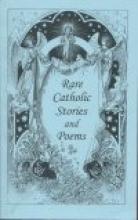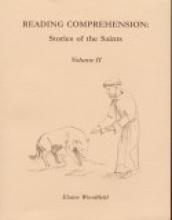No name
Questions for the Thinker, Old World Europe
Railroad RushHour: Train Escape Game
I can hardly say enough good things about this fun and thought-provoking game (which a good friend gave to my son for his birthday a few days ago). Each of the 50 playing cards presents a puzzle scenario which you set up on the gameboard with the train pieces. The object is to move the pieces around until you can get the red locomotive off the board. The puzzle scenarios gradually increase in difficulty, but all of them are fun and challenging (even for parents!). Our family has already enjoyed many hours with this puzzle and, given the large number of puzzle scenarios, the variety of challenge levels and the keen interest to a broad range of ages, I'm sure we'll be enjoying and learning from it for a long time to come. Our children as young as six were able to play the game.
Although there are a number of pieces, they are big enough to not get lost too easily or be terribly dangerous for little ones (although I wouldn't trust those in the choking-range with the pieces). We punched holes in the card deck and keep them together with a binder ring. My only complaint is that the colors of the playing pieces didn't match the colors on the playing cards very well.
Includes: game board with 19 pieces, card deck and travel bag
Raising Sweetness
Rand McNally Historical Atlas of the World
- Human Emergence on the Changing Face of the Earth: Growth of Civilization to 200 A.D.
- Alexander's Empire 336-323 B.C.
- Roman Republic 31 B.C.
- Roman Empire about 120 A.D.
- Roman Empire about 400 A.D.
- Easter and Southern Asia About 750 A.D.
- Islamic World c. 800 A.D.
- International Trade 1350 A.D. - 1450 A.D.
- Europe and the Crusader States about 1140
- Asia at the death of Kublai Khan (1294)
- Europe (about 1360)
- European Civilization during the Renaissance
- Europe's Age of Discovery 15th-17th Centuries
- The Ottoman, Safavid and Mughal Emipres in the 16th and 17th centuries
- East Asia 16th Century
- Eastern and Southern Asia about 1775
- The Holy Roman Empire after the Peace of Westphalia 1648
- Europe in 1721
- Native America
- Revolutions in the Atlantic World 1776-1826
- Westward Expansion 1800-1850
- Latin America about 1790
- Latin American 1800-1900
- Latin America after Independence: 1821-1929
- Expansion of Russia in Europe
- Languages of Europe in the 19th Century
- European Partition of Africa: 19th Century
- Resistance to European Colonialism: 1870-1917
- The World about 1900
- Asia 1900
- Europe 1922-1940
- World War II
- Easter Mediterranean Area: 1945-1990
- and Current World and Political and Physical Maps
Rare Catholic Stories and Poems
Make sure you have a hankie close by when you read these books. These faith inspiring stories surely must have contributed to the steadfastness that Catholic children displayed years ago. The stories in both volumes include main characters that are young and old, male and female thus appealing to everyone. Each story is short enough to be read by an average 4th grader in five to ten minutes. Follow up comprehension questions range from simple recall to more the more thought provoking type that would open the door to many wonderful parent child discussions. We had our children read this book straight through as their spiritual reading and at a later time had them read some of the stories again and work through the comprehension questions. This book would also serve well as a source for bedtime stories or for poetry memorization. Volume 1, which is suitable for grade 3 and up, is a small softcover book 5½" x 8½" and includes several illustrations for each story.
Reading Comprehension: Stories of the Saints
Reading Comprehension: Stories of the Saints, Volume 1
Ten Saint stories are told in an engaging manner for children (recommended for mid-grade schoolers): St. Maria Goretti, St. Maximillian Kolbe, St. Catherine Laboure, St. Bernadette Soubirous, Blessed Miguel Pro, St. Martin De Porres, St. John Bosco, St. Francesca Cabrini, St. Philomena, and Blessed Herman of Reichenau. Each story is approximately 6 - 8 pages long and is illustrated with pen and ink drawings. The Reading Comprehension portion for each story includes vocabulary words, study questions and a number of projects relating to the saint such as - memorizing special quotes from the saint, researching a report relating to the saint, illustrating scenes from the story or studying some of the geography of where the saint lived and worked. The stories are beautiful and inspiring and cover both very familiar saints and some more obscure ones. My very favorite (whom I had never heard of before) was Blessed Herman of Reichenau - a severely crippled monk (with a brilliant mind) who lived in the Middle Ages and composed the Salve Regina (Hail Holy Queen). A complete answer key is found in the back of the book.
Reading Comprehension: Stories of the Saints, Volume 2
This book provides twelve engaging saint stories (four to nine pages each) with a page or so of vocabulary words, comprehension questions, quotes from the saint and project ideas. Saints covered in this volume are: Saint Faustina Kowalska, Saint Juan Diego, St. Rose of Lima, St. Francis of Assisi (in two parts), Rose Hawthorne Lathrop, Venerable Fr. Solanus Casey, St. Helena, Blessed Fr. Damien of Molokai, St. Elizabeth of Hungary, St. Ambrose and Mother Seton.
The stories are nice enough to make this a stand alone book of saint stories even without the reading comprehension sections. Mrs. Woodfield has a way of including the most interesting details about the saints that I haven't seen elsewhere. Most stories are illustrated with pen and ink drawings, while modern Saints are illustrated with black and white photos. A complete answer key is included.
Copyrights 1998/2002
Reading Comprehension: Stories of the Saints, Volume 3
This book contains four in-depth saint stories (approximately 25 pages each): St. Edith Stein, Blessed Gianna Molla, Blessed Father Francis Xavier Seelos, C.Ss.R and Blessed Junipero Serra. The stories are very nicely told, with all the interesting tidbits that people love to read about. Mrs. Woodfield likes to catch the reader's attention by starting out at a particularly interesting part of the story and "leave you hanging" while she goes back to the childhood and upbringing of the saint (or blessed) in question. These are great stories, and the first two in particular are enhanced by a number of black and white photographs.
Saint Edith Stein (1891-1942) was a German Jew-turned-atheist who converted to the Catholic faith in 1922. In 1933 she entered the Carmelite Convent in Cologne Germany, but later was moved to Holland because of the danger from the Nazis. In 1942, Dutch Catholic Bishops spoke against the Nazis treatment of the Jews. The Nazis took revenge by rounding up Catholics of Jewish ancestry and sending them to concentration camps. Saint Edith Stein died at Auschwitz in August of 1942.
Blessed Gianna Beretta Molla (1922-1961) was an Italian doctor and mother of three children when she learned she was expecting her fourth child. It was discovered that a large tumor was growing in her womb during pregnancy. This required surgery but posed several options: 1. remove the tumor and the womb, ending the life of the unborn child (the "safest" option for Gianna herself), 2. remove the tumor and the unborn baby (without removing the womb - allowing possible future pregnancies, but still ending the life of the child), 3. remove the tumor, but allow the baby to come to full term and live (posing the danger of complications during childbirth because of the surgery). Gianna chose the third option.
Blessed Father Francis Xavier Seelos C.Ss.R. (1819-1867) was a Bavarian-born Redemptorist priest who faithfully served as a parish priest, pastor, and seminary instructor in various parts of the United States. While in Pittsburgh, Pennsylvania (with St. John Neumann as a superior), he contended with the anti-Catholic Know-Nothings while ministering to his parishioners, teaching catechism and providing a worthy example to many. He also worked in Maryland and Louisiana. This story would make an interesting Catholic addition to the study of American History.
Blessed Father Junipero Serra (1713-1784) is the well known Franciscan priest who founded the California missions - Catholic centers of evangelization, worship, education and protection for the local natives of California.
Saint stories are the ultimate antidote to modern culture. Average Americans today are bombarded with television commercials which not only try to persuade them to buy particular things, but generally help them to develop the mindset that material things will make them happy. Saint stories are about happiness too. They show us that a certainly earthly happiness (and true happiness in the long run) can come from living according to an idea that is very foreign to modern culture. Material goods are never truly satisfying. They only create a desire for more. A love for God and a life of service toward others, while more challenging, is also much more rewarding.
This book is recommended for seventh grade, but could be read aloud to younger children and would be suitable for high school and adult levels as well. Each story includes a very extensive section of Lesson Activities from which comprehension questions, vocabulary and a wealth of other projects and exercises can be chosen to reinforce the story and develop comprehension skills. A complete answer key is provided in the back of the book.








